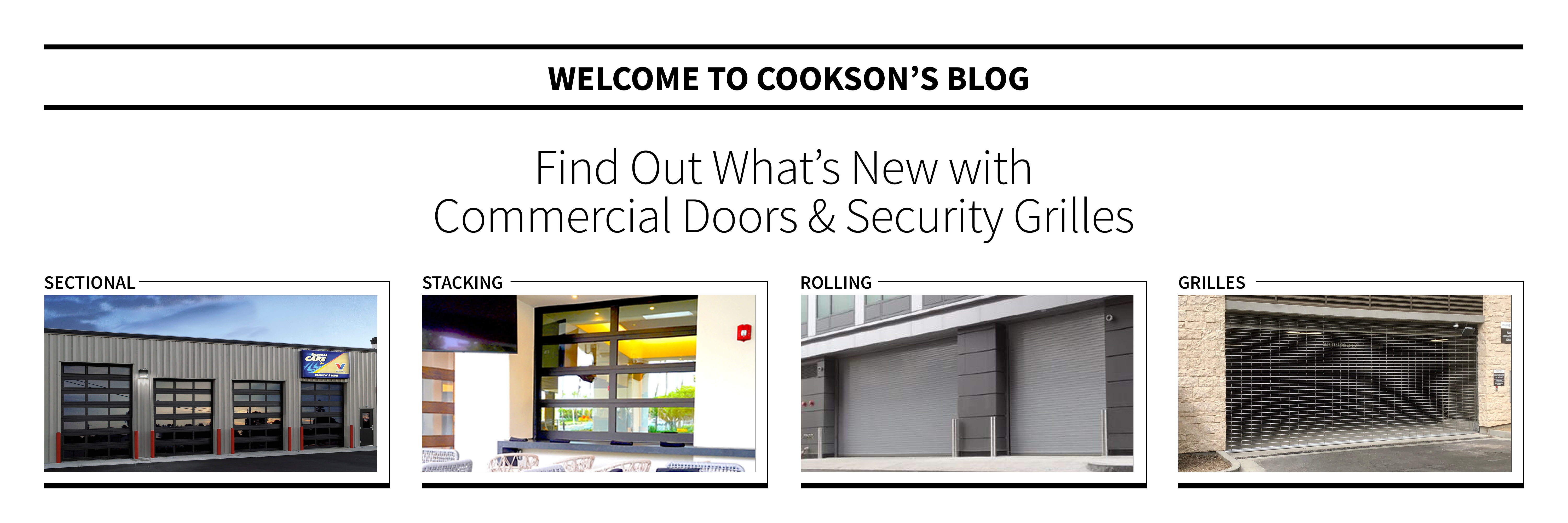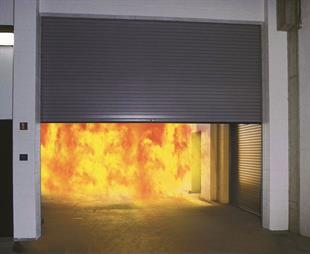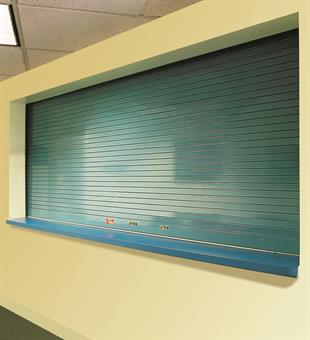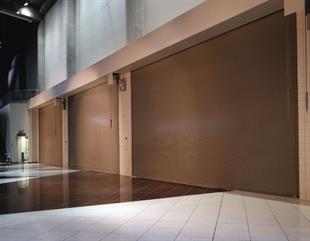

Cookson Blog
Welcome to the Cookson Blog! - Roll Up Door and Security Grille news - What's New?
SUBSCRIBE
Get updates on new blog posts to your inbox!
How Often Do Fire Doors Need to Be Inspected?

If you’re reading this, chances are you’re either considering a fire rated rolling door or already have one. Congratulations on making your building safer and protecting lives and property!
You also probably know that fire rated doors compartmentalize building areas to isolate fire incidents and provide security and access control in wall openings that do not require egress. These solutions are labeled passive fire protection and can save lives and prevent property damage during a fire.
You also might know fire-rated doors must be inspected annually as mandated by the NFPA’s (National Fire Protection Association) Publication 80. The mandate includes an annual fire door assessment and a drop test. NFPA 80 addresses the installing, testing, modifying or repairing of opening protectives, including fire rated rolling doors. NFPA 80 has three elements to ensure fire doors are inspected and evaluated for operation and during drop testing and must be performed by a qualified professional. If the fire rated door fails any one of the three categories mandated in NFPA, it fails the entire test and can no longer be in use.
Keep reading to learn more about what exactly the NFPA 80 test entails.
What Happens During the NFPA 80 Evaluation?

NFPA Publication 80 outlines the specific items requiring inspection, and the testing that needs to be completed for each fire door. Although it is not necessary to use a certified door inspector, the person performing the inspections and testing must have the required training and experience to complete these tasks accurately.
Here are the three primary evaluation and testing elements.
Visual inspection
During the evaluation, the fire door is first inspected for damage. This can include missing or broken parts along with visible damage or marks. Any conditions that could result in the door not operating correctly are noted.
The door should also have clearly visible labels. The evaluator will ask that any painted or coated cables or fusible links to be replaced. A door that doesn’t pass the visual inspection will fail.
Operational testing
Next, the operation of the door is tested. The door will be cycled through its opening and closing cycles as in its daily, typical operation. If the operation is affected because the door is not balanced correctly or doesn’t close properly, the door will fail. Before the final step of drop testing, all damages and defects to the door must be addressed. This includes replacing missing parts and any repairs needed to get the fire door back to tip-top shape.
Drop testing
Finally, the drop test confirms the door will close automatically and without issue during a fire. The door manufacturer typically provides recommendations for the fire door drop test and includes all types of door activation to be used during the test. The door must be dropped and reset entirely at least twice per NFPA 80 section 5.2.3.7.3.1 to evaluate if the door is working correctly.
After the second drop test, the door can be reset to its typical real-life use. The technician will also measure the closing door speed, with the average closing speed needing to be between 6 inches and 24 inches per second.
Why NFPA testing is important
While the NFPA 80 testing may seem intimidating, it was created to ensure your doors are working correctly in the event of a fire. It’s better to go through a bit of a hassle before any fire occurs rather than finding out your fire door is faulty. You’re not alone in keeping your doors up to snuff, either. Most door manufacturers and dealers have set inspection schedules to keep you and your doors on track and in the best working order.
To learn more, check out the DASMA Technical Data Sheet (TDS) #270 on Recommended Rolling Door Maintenance Practices and TDS # 271 on Rolling Steel Fire Doors, Drop Testing, and Annual Follow-Up. Your door manufacturers and dealers can also help you address your questions and concerns about fire-rated doors and their NFPA 80 evaluations. They can also recommend a qualified technician to perform the test.
How Do I Choose a Qualified Fire Door Technician?
To choose a qualified technician who won’t lead you astray, we recommend asking your prospective technician about their knowledge and background in fire doors and fire door drop testing. Some questions you should ask are:

- Have you attended any International Door Association Seminars?
- How have you kept their education and knowledge of doors up to date?
- Do you have any Institute of Door Dealer Education and Accreditation (IDEA) certifications that are relevant?
- What are your areas of door expertise?
- Do you have references I can speak to?
- Do you follow the NFPA for your evaluations and tests?
- Can I have a copy of the procedures you typically do when testing a fire door?
- Do you offer replacement parts from my door manufacturer, or can you point me toward someone who does?
Again, these questions may seem a bit intense, but your building and its occupants’ safety are at stake if a fire door malfunctions. Remember to have both your fire rated doors and shutters tested annually, and keep the testing on file for at least three years for the Authority Having Jurisdiction (AHJ) in your area.
Document organization is also critical for quick, accurate access when needed. Having separate documents for each door is especially helpful, including the door model, installation location, specific fire rating, and date of the last inspection.
Why choose Cookson for commercial fire-rated doors?
Fire-rated doors from Cookson help protect your property and, more importantly, save lives. Our fire door systems deliver industry-leading operation that automatically activates electrically or thermally to contain the spread of fire and smoke. Fusible motor, chain, or crank operations are available. In addition to protecting against smoke and fire, these doors offer access control and security measures.
Our fire-rated doors are a good fit for buildings with specific codes, or property owners who must meet specific insurance requirements. We can customize a fire-rated door to your unique structural needs to deliver a solution that provides reliable, safe activation at the first sign of a fire.
Our Firemiser Insulated Rolling Fire Door provides all the safety benefits of our standard fire doors while delivering an insulated door's energy efficiency and sound reduction advantages. We use technologically advanced mineral wool for insulation to help minimize thermal transfer and provide potential savings on utility costs. While these doors are an excellent fit for exterior building applications, they also work well for an area that may be expanded into an internal space later.
Cookson's ERD21 model offers SmokeShield® draft and smoke control conforming to UL1784. This feature ensures the smoke compartmentalizes with the fire and does not spread quickly throughout your facility.
Contact us today for more information
Fire-rated doors from Cookson set the industry standard for protection and performance. Contact us online today for help finding a fire door that meets your unique needs.

Cookson continues to lead in innovations in roll up door, security gate and closure products. To inquire how Cookson’s experts and customer service can help you with your next roll up door project, call 1-800-294-4358





